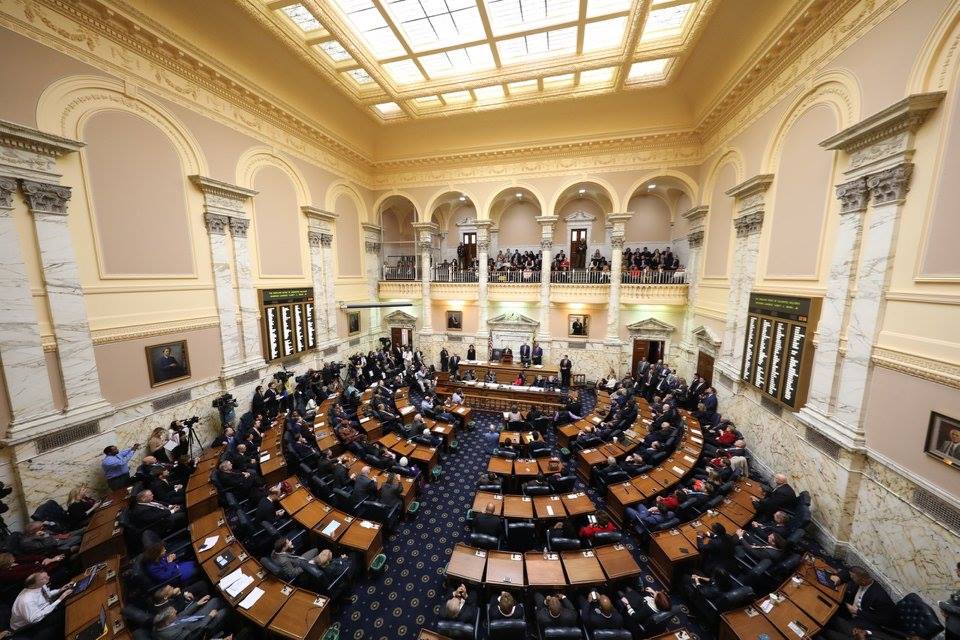By Barry Rascovar
For MarylandReporter.com
There is nowhere in Maryland more isolated and cut off from the rest of the state than Garrett County.
Distance (200 miles uphill from Baltimore) and the Alleghany Mountains present formidable barriers for the hardy souls who inhabit the state’s western-most county.
It is a large, forested county with prime tourist attractions in the summer (Deep Creek Lake) and winter (Wisp ski resort).
But its tiny population, not surprisingly, is shrinking. Help from Annapolis has been modest at best.
Only Pittsburgh TV News
Here’s how bad the situation is for Garrett residents: They are considered part of the Pittsburgh metropolitan census area rather than the Cumberland census tract.
The only news they get from cable TV is from Pittsburgh.
They see plenty of TV ads about Pennsylvania’s heated race for governor but not a peep about Maryland’s coming elections.
Only the recent intervention of the Internet had allowed Garrett citizens to keep in touch with news from Baltimore and Annapolis on a timely basis.
Adding to the county’s isolation is a political reality: Garrett is overwhelmingly Republican. Democrats are outnumbered 2-1. The mountain politics practiced there are decidedly conservative and at odds with the ruling liberal Democratic majority in the megalopolis far to the east.
Speaking “out west”
I ventured “out west” this past week to address the Garrett County Chamber of Commerce. Due to a late-arriving bout of laryngitis, those packed into a conference room at Wisp had to listen to my croaking, cracking voice. Their patience and tolerance were impressive.
Democratic (and Republican) voters in that county will be casting their ballots with scant information about the statewide candidates. No Democratic candidate for attorney general or governor is going to devote limited resources and time to educate Garrett voters.
So these mountain voters are pretty much on their own learning about the candidates. Of the three Democrats running for governor, only Attorney General Doug Gansler seems to offer a ray of political moderation. Lt. Gov. Anthony Brown knows little about the county and will continue the benign neglect policy followed by the O’Malley administration toward this small, conservative, Republican county.
On the Republican side, neither Harford County Executive David Craig nor businessman Larry Hogan Jr. of Anne Arundel County are targeting Garrett as a priority. How voters gather data for an informed election-day decision is a bit baffling.
Despite its isolation from the rest of the state, Garrett has much to teach those living on the other side of the Eastern Continental Divide.
Only in conservative Garrett have elected officials taken the lead in making sure their children receive a college education.
Every Garrett high school graduate knows the county will pick up the cost (after grants and scholarships have been applied) to guarantee college study or training at Garrett’s community college.
Garrett College offerings
 CORRECTION 4/21, 11:30 a.m.: That small institution, with a main campus and three outreach centers, has developed a reputation for its programs in “Adventure Sports;” natural resources and wildlife technology, and business and information technology.
CORRECTION 4/21, 11:30 a.m.: That small institution, with a main campus and three outreach centers, has developed a reputation for its programs in “Adventure Sports;” natural resources and wildlife technology, and business and information technology.
This is an aggressive, pro-active plan other Maryland counties should emulate. Government ensures full tuition payment for any Garrett high school graduate. In Maryland, that’s revolutionary.
Garrett’s leaders are providing their youth with skill sets needed to staff tomorrow’s plants and offices. Government is playing a pivotal role in developing a local workforce that makes economic development appealing.
That may not fit the mold of a “conservative” government, but it is a practical, real-life recognition that government is there to help people, not erect barriers to their success.
That same mind-set is evident in the kinds of individuals Garrett sends to Annapolis. Yes, these are conservative thinkers. Yes, they are rock-ribbed Republicans. But Garrett’s mountain life adds a bit of cooperative pragmatism to the mix.
Both Del. Wendell Beitzel and Sen. George Edwards are hard-core conservatives. They also are realists. They understand they are vastly outnumbered by Democrats and that taking rigidly ideological positions in total opposition to the Democratic majority will get them nowhere.
They are willing to collaborate and compromise on many issues. They understand their county’s many needs. They also understand that Annapolis works best when delegates and senators try to bridge the political gap through dialogue and finding common cause.
Collaboration pays off
Edwards and Beitzel work with Democrats. It pays off in small ways that mean much back home. In the most recent legislative session, Garrett took home an extra $464,000 for its schools, which suffer unfairly from a state aid formula that penalizes counties with shrinking school populations.
That’s a victory for common sense and the two legislators’ ability to show their colleagues that a real need exists for extra school assistance.
On other issues, Garrett’s politicians are simply outnumbered. Garrett is the one county that could benefit substantially from shale-oil hydraulic fracturing. But the O’Malley administration seems ready to impose the toughest “fracking” regulations in the country. That may be overkill.
The net result will be to scare off drilling companies, which already have flooded into Pennsylvania and Ohio. Garrett’s natural resources will be left untapped and its landowners will be denied an economic benefit that could give the county a much-needed economic boost.
Where’s O’Malley?
The O’Malley administration’s hostility toward fracking and other business development programs that involve environmental issues has left Garrett in a precarious position. Its economic issues aren’t being addressed by the governor.
There is scant attention paid to finding ways to reunite Garrett citizens with the rest of Maryland. Garrett’s economic needs just aren’t high on O’Malley’s priority list.
Maybe things will change with a new administration in Annapolis. But don’t count on it.
What Garrett could use is another William Donald Schaefer in the governor’s mansion, a chief executive who identifies with the state’s most isolated and needy jurisdictions and who comes into office with a “do it now” attitude.
Sadly, politicians like Schaefer don’t come along often. Then again, perhaps the next governor will seize the moment to show that he understands the importance of lending more of a helping hand to Maryland’s western-most county.
Editor’s note: According to the U.S. Census, Garrett County has population of about 30,000, which is 98% white, and has a median household income of $45,000, compared to $73,000 for all of Maryland, which is 61% white.
Barry Rascovar can be reached through his blog-site, www.politicalmaryland.com, or at brascovar@hotmail.com.








The county is too small to be a separate state. However, I would heartily endoserse it participating in the State of Western Maryland initiative. Garrett County deserves better and being a part of a State that gets it about the importance of true representation based on local needs and directives is an answer. See David Hume’s essay on the right size for a state: http://www.abbevilleinstitute.org/review/david-hume-republicanism-and-the-human-scale-of-political-order/